Art has long been a part of the Indian culture and it is evident from the fact that every region in India has a regional specialty when it comes to native art/craft. Be it textile printing, paintings, handicrafts, you name it and it can be found in our marvelous country! The rich history behind these art forms is what makes the end product so amazing and inviting. After all, a certain story associated with something which has been passed down from one hand to another for generations, is bound to hold much more meaning beneath its surface. India is a country which is grateful to its people for keeping these long traditions alive in today’s times of mass production.
Here is a list of 7 indigenous art that can be found in India:
1. Patachitra: Native art of Orissa that depicts Hindu epics.
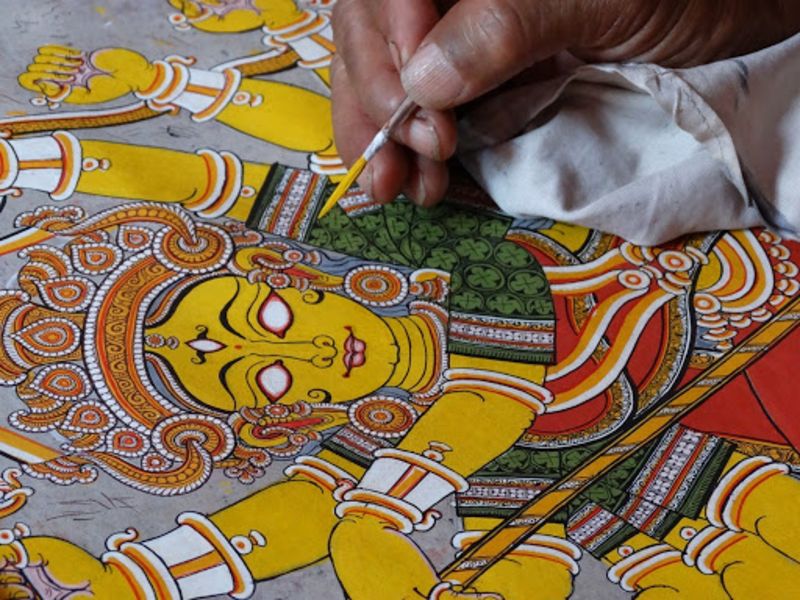
If we had to literally translate Patachitra, then ‘Pata’ means cloth and ‘chitra’ means picture/paintings, therefore ‘Patachitra’ means cloth paintings. It is the special art form of Orissa and can be dated back to the 5th century BC. The canvas of the painting is made by covering fine gauze like cloth with tamarind paste, chalk powder and gum and then drying it. After this step, a set of intricate patterns are drawn on the canvas and it is filled with natural dyes. The specialty of the Patachitra paintings is the fact that they are used to depict the stories from the epics of Mahabharata, Ramayana and those of the local deity Jagannath. The appearance of these paintings became widespread with the construction of the great temples of Puri, Konark, Bhubaneshwar.
2. Cane Craft: Native art of north east India that dates back to 2nd AD.

The Northeastern part of India is known for their unique handicrafts. The tribes of Mizoram have been making the same patterns for ages and have become a part and parcel of their lives now. Traditional bamboo and cane craft can be considered to be a speciality of this tribe. The use of cane and bamboo is basically done to produce both utility and decorative items. The products made of bamboo and canes are highly durable and very stylish. Baskets, utensils, hats, flower vases, furniture and other decorative items are made out of these bamboo and cane handicrafts, which has a wide market within the state and outside. Moreover, they are very affordable too.
3. Gond art: Nave art that brings luck.
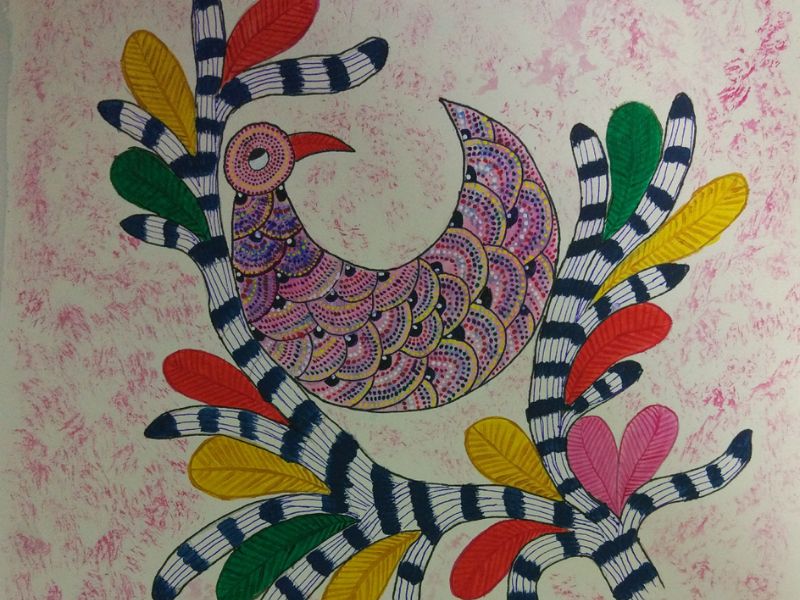
This art form has been developed by the tribe of Gonds in Central India. The technique of Gond art can be traced back to the old art of tattooing which is common among the Gonds. Nature and social customs are depicted by the Gond artists with a series of dots and dashes intricately arranged into forms. Their paintings have been inspired by the nature that they are surrounded with. These paintings are usually made on walls, ceilings and floors of the houses in the villages in honour of customs and traditions as the Gonds believe their paintings to bring them luck. The paintings are a combination of earth tones and vibrant hues, which bring the canvas to life.
4. Bengal Pat: Native art that depicts tragedies using dye made of spices.
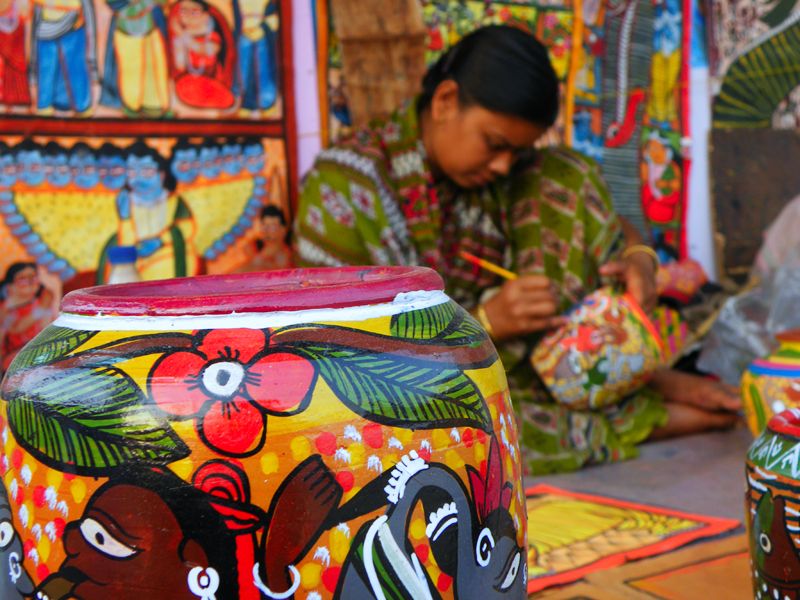
This unique art form indigenous to Bengal called ‘Bengal Pat’ is one similar to Orissa’s ‘Patachitra’. This art form of Bengal developed hundreds of years back when roaming minstrels used to sing about incidents of the distant past and popular lore to villagers. The dyes for the paintings are made from spices, earth, soot, etc. The traditional colors used in Bengal Pat are red, indigo, green, black and ochre. This art form reflects the life and times of the society and folklore.
5. Kalamkari: A native art that depicts Indian epics.

‘Kalam’ in Hindi means pen and ‘kari’ means work, hence ‘kalamkari’ refers to penwork. The artists use fine pens made of bamboo dipped in vegetable dyes to draw. These drawing are made in intricate patterns and fine lines. This style of painting was developed in Kalahasti near Chennai and Masulipatnam near Hyderabad. Kalamkari painting flourished during the Maratha rule and developed a style called the Karuppur. Kalamkari specifically depicts epics such as Ramayana and Mahabharata. It’s a worked on fabric which is enhanced with gold brocade for the royal families.
6. Batik Art: 200 years old native art of Bengal.
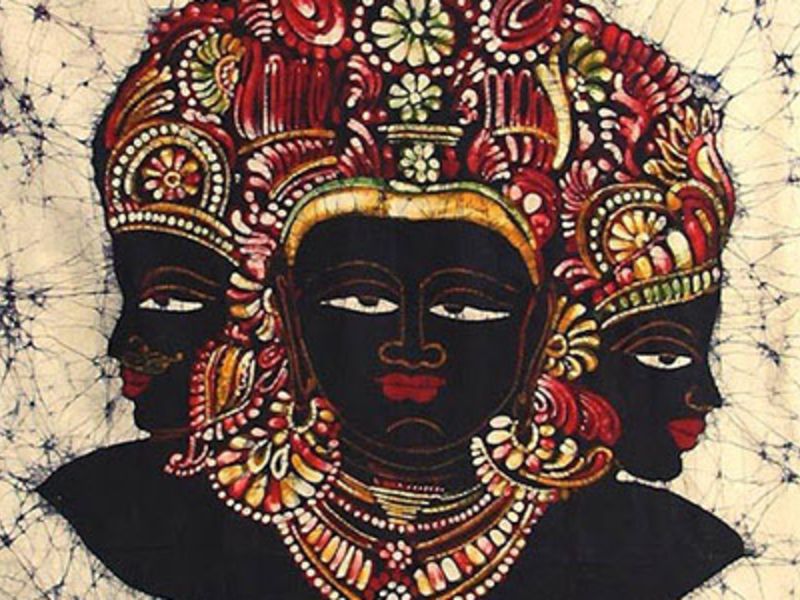
Batik art originates from the Indian state of Bengal and dates back to thousand years. Batik art refers to the art of dyeing fabric by making use of resist techniques, covering areas of cloth with a dye resistant substance to prevent them from absorbing colors. Batik art is created in several ways like splash method, screen printing method, and hand painting one is by a Kalamkari pen. The Batik art fabric is in high demand as dress materials, designer home decor and also as forming an important part of contemporary fashion accessory.
7. Warli: Native art of Maharashtra that depicts social life of tribal.
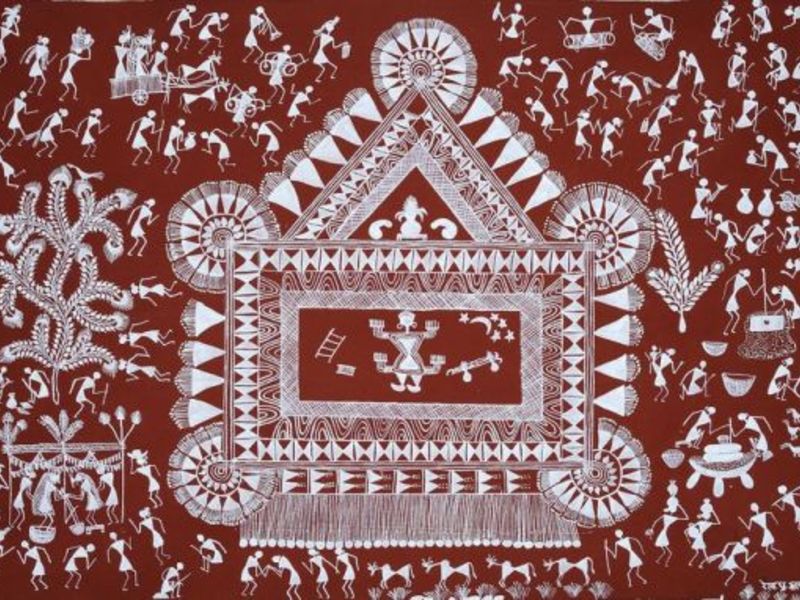
Warli or Worli art always depicts groups of people in their art piece. Harvest is one of their major themes. One other very popular theme is that of a wedding festival. These paintings are mainly created on mud walls of tribal houses and women are mainly engaged in the creation of these paintings. These paintings do not depict mythological characters or images of deities, but depict social life. Images of human beings and animals, along with scenes from daily life are created in a loose rhythmic pattern.


